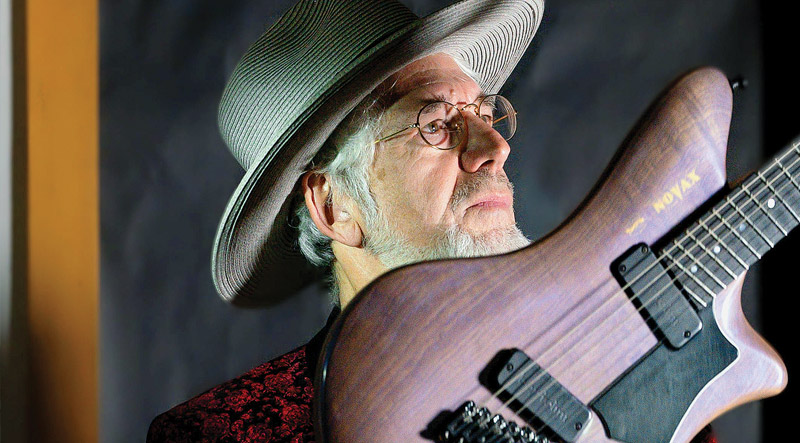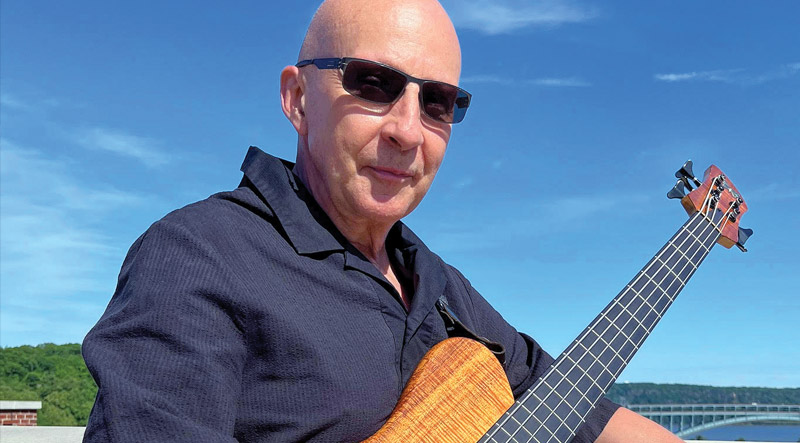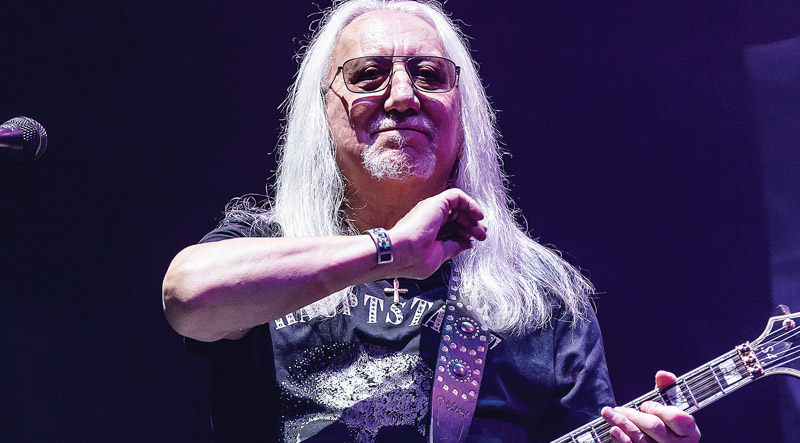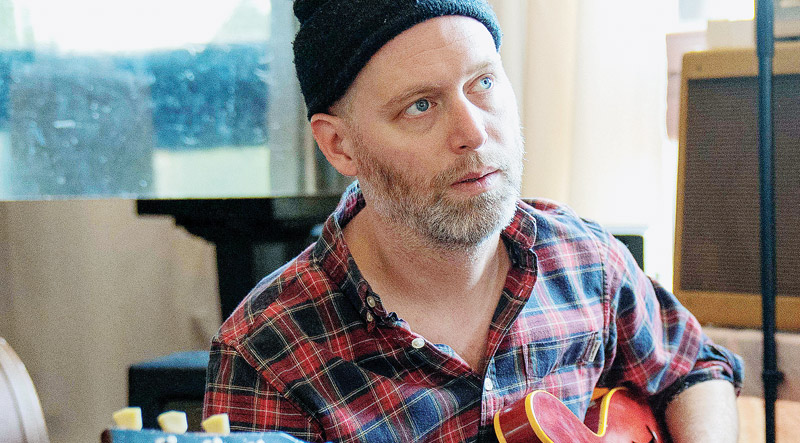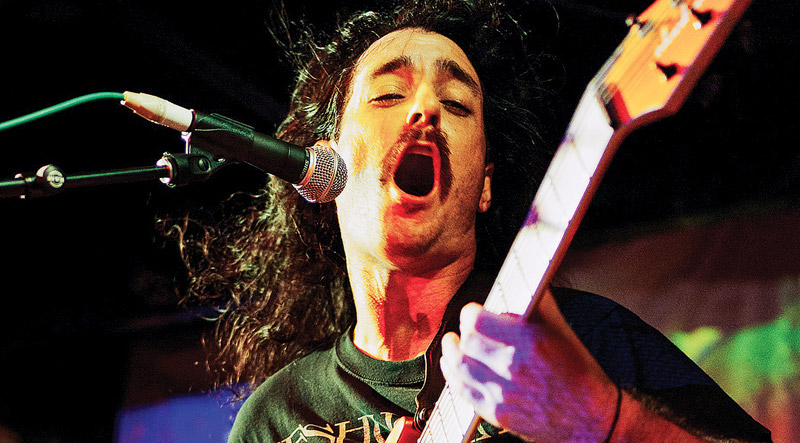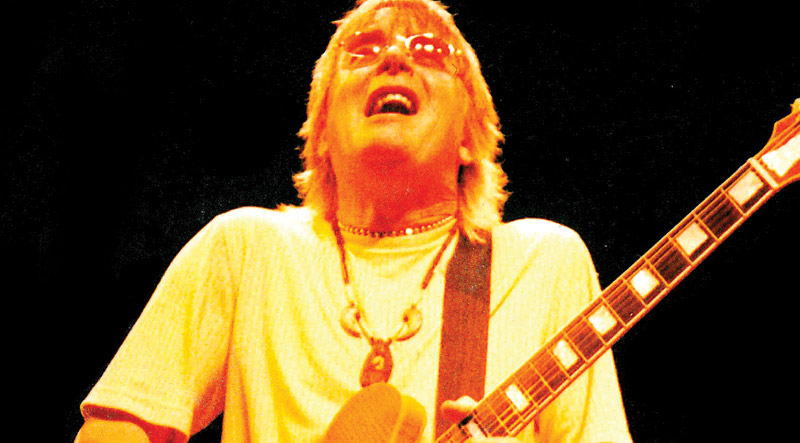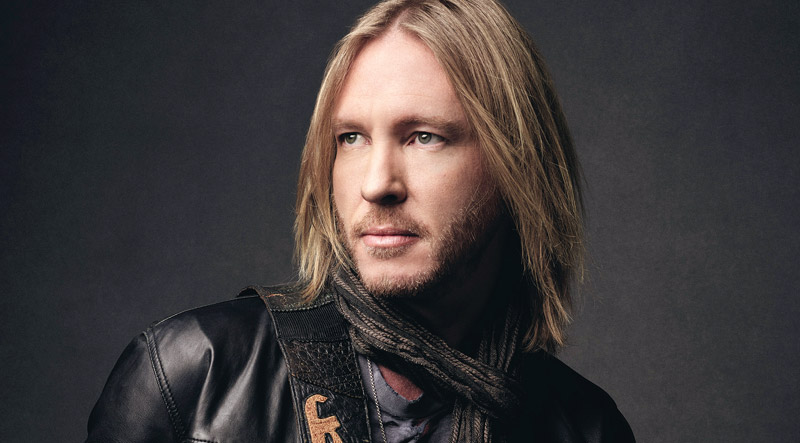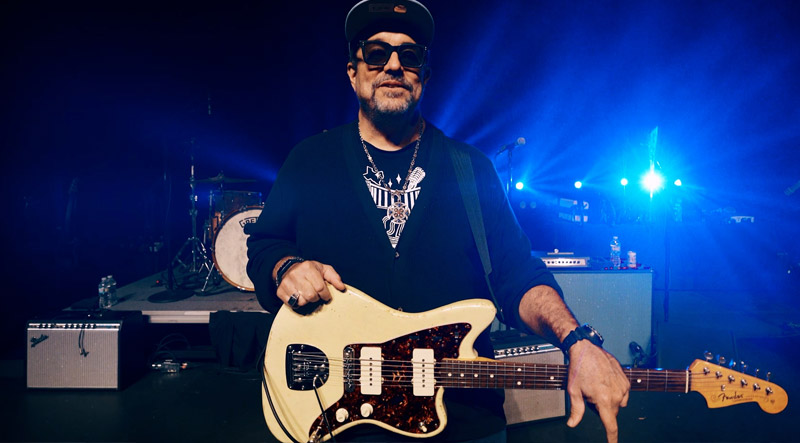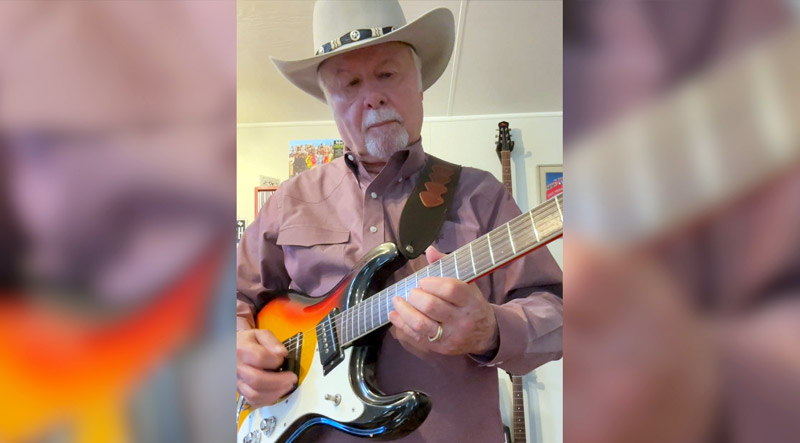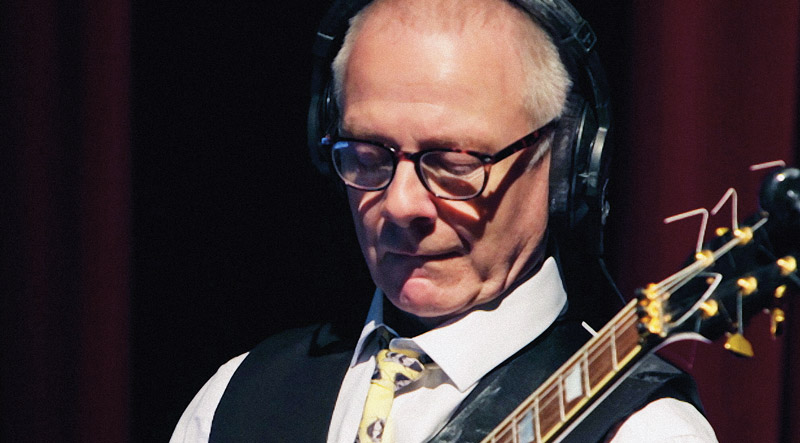
Don Latarski is well-known in the Pacific Northwest as a player, author, teacher, and composer. His acoustic playing is revered, but on his latest, Audiography, Latarski brings in a full band for a set of electric tracks laced with uncanny jazz, blues, and rock ideas. Let’s check in with the Oregon ace.
People mostly know your acoustic playing, but not electric.
My inspiration for playing guitar actually came from electric players; up until 1983, I didn’t even own an acoustic. My first LPs are all focused on the electric, but around ’96 I started making acoustic records. Later, I had a steady gig in Eugene, and I began to figure out how to play guitar without a keyboardist. I also quit using a pick. I look back on that period as really pivotal in my playing.
Do you play electric with fingers or a pick?
I’ve been playing fingerstyle exclusively since around 2000. Since I stopped using fake nails, I have to be more careful because my natural nails are thin and they do break. My tone isn’t as good as it used to be when using fake nails, but my life is simpler without all the maintenance. There’s just a different tone I love when using a little nail along with the fleshy part of the finger.
“Noctiluca” sounds like you were under the spell of Larry Carlton and Robben Ford as a young player.
Like so many guitarists of a certain age, I was smitten with Carlton, Ford, Scofield, Coryell, Bill Connors, Howard Roberts, Wes Montgomery, and George Benson. Before that, I was into early Clapton, Beck, Peter Green, Roy Buchanan, Mark Knopfler, and other blues-based players. I’ve always been attracted to the emotional, funky players – but when Pat Metheny came along, I was deeply affected by his melodic approach.
“Blues #1” is a lyrical, jazz-enhanced approach to electric blues guitar, and avoids the cliches.
My background as a jazz player enabled me to solo using a vertical approach. In other words, I’m integrating notes from each chord, chord extension, or substitution into the solo. I love this approach, and it opens the door to new ideas that scale-based playing can’t get to. I play a lot of arpeggio-based ideas. This approach gets me deeper into the harmony – and I want to take the listener into that harmony.
What do you look for in an electric guitar?
I look for something light, with a slightly wide and thick neck, and some undefinable “mojo” that speaks to me. I’ve had Les Pauls, Strats, archtops, and Teles, but when I became friends with Ralph Novak, he introduced me to his solidbody fanned-fret instruments. His Novax Sweet Annie model is the only electric guitar I used on Audiography. I’ve owned two of them and the current one has a particular sound I’ve never heard on an electric guitar before. It’s push/pull switch provides a huge range of tonal color.
What about the pedals and amps?
All of my electric parts were recorded direct through an Ethos Overdrive preamp. It’s all-analog and has a simulated speaker output, which went into a Neve DI – it’s like getting the front-end of a really incredible amp. I did use a little wah on a couple of tracks, but it’s a modeled pedal from inside Logic Pro X. Other than the Ethos and Neve DI – which I do think of as a tone shaper – I didn’t use any pedals or amps, or any of the modeled amps or speaker cabs in Logic. My goal with this project was to really up my guitar tone, and I think I achieved that from the last trio record. I play pretty quietly these days, and for live gigs I use the smallest Quilter Mach 2 Combo 8. An acoustic guitar sounds pretty good plugged into it, since it is has a full-range 8″ speaker.
“Bottoms Up” brings to mind that old jazz adage: “It’s not what you play; it’s about what you don’t play.”
The hardest thing to learn about playing is when to use space. There are times on gigs with my trio where I just quit playing. My group is also what I’d call “conversational”; we allow each other to experiment, and there’s always a give-and-take chemistry at work. These guys – Mark Schneider on bass and Jason Palmer on drums – are fabulous players with way more experience, stylistically, than me. I happen to be the writer, but they bring ideas to the tunes that I wouldn’t even conceive of. We’ve been together a long time and, from the first note on a gig, the magic always happens.
This article originally appeared in VG’s February 2023 issue. All copyrights are by the author and Vintage Guitar magazine. Unauthorized replication or use is strictly prohibited.

